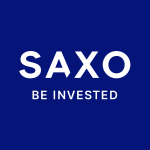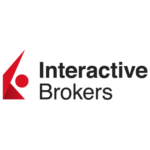Day trading is a trading style or strategy within which traders carry no overnight risk. Day trading positions are opened and closed within a single trading day or session, regardless of their outcome.
The strategy became increasingly popular with the emergence of the internet and online trading services in the late 1990s and early 2000s and was initially taken up by thousands of US retail stock traders who realised they could access, trade and keep in touch with the markets alongside their day jobs. As internet connectivity spread throughout the UK & Europe day trading found a natural partner in the rapidly expanding CFD markets, financial spread betting and particularly in Forex trading.
Best UK Day Trading Platforms 2023
We have ranked and reviewed the best day trading platforms for short-term speculation through CFDs, futures and options. We have also looked at what each specific day trading platform is good at which we highlight below:
- City Index: good for day trading signals
- Interactive Brokers: good for low-cost day trading
- IG: good for high volume OTC day traders
- Spreadex: good for day traders that like personal service
- CMC Markets: good for day trading on sentiment
- Saxo Markets: good for professional day traders
- eToro: good for seeing what others are day trading
- Tickmill: good for small futures traders
- Forex.com: good for forex day trading
- XTB: good for day trading education
Use the below comparison table to see how many markets a broker offers for day trading, the minimum amount to get started, and see our overall expert ratings.
| Trading Platform | Markets Available | Minimum Deposit | GMG Rating | More Info | Risk Warning |
|---|---|---|---|---|---|
 | 13,500 | £100 | See Platform | 69% of retail investor accounts lose money when trading CFDs with this provider | |
 | 1,200 | £1 | See Platform | 75.3% of retail investor accounts lose money when trading CFDs with this provider | |
 | 17,000 | £250 | See Platform | 69% of retail investor accounts lose money when trading CFDs and spread bets with this provider. | |
 | 10,000 | £1 | See Platform | 64% of retail investor accounts lose money when trading CFDs with this provider | |
 | 12,000 | £1 | See Platform | 67% of retail investor accounts lose money when trading CFDs with this provider | |
 | 9,000 | £1 | See Platform | 64% of retail investor accounts lose money when trading CFDs with this provider | |
 | 7,000 | £1 | See Platform | 62.5% of retail investor accounts lose money when trading CFDs with this provider | |
 | 2,976 | $50 | See Platform | 51% of retail investor accounts lose money when trading CFDs with this provider. You should consider whether you can afford to take the high risk of losing your money | |
 | 578 | £100 | See Platform | 71% of retail investor accounts lose money when trading CFDs and spread bets with this provider | |
 | 5,000 | £1 | See Platform | 68% of retail investor accounts lose money when trading CFDs with this provider. |
How to choose the best broker for day trading
When you are choosing a broker for day trading you should consider which account will be best for your needs but also offers the following features to help ensure that you can be successful day trading;
- Fast execution speeds – as a day trader you will want to move quickly and execute trades as opportunities arise, if your broker closes and opens trades for you rapidly, at the prices you targeted, you will be more likely to be successful. Any delays in executing trades could impact your profits. Saxo Markets offers DMA and some of the fastest speeds for on-exchange day trading.
- Good value – nobody minds paying for a better service but you will want to check the pricing structure of your broker thoroughly to ensure that you are not overpaying for their services. Extra charges and fees will impact your profits. In almost all asset classes, Interactive Brokers is consistently ranked as having the lowest day trading costs.
- Customer support – if you’re new to day trading then you may want to consider choosing a broker that offers extensive customer support and advice options to help you get started. Spreadex has always won our awards for the best customer service as voted for by day traders.
- Competitive spreads, leverage and margins – tight spreads can mean your trades become profitable more quickly and the provision of leverage can help you to make greater profits with only the capital behind you that you have, however, it can also mean losses escalate more quickly. Likewise, margins can help you make bigger trades than your balance, although there is a real risk of loss if the markets move against you. IG has one of the largest day trading brokers) offers a very good all-round mix of pricing, increased leverage (for pro traders) and liquidity for OCT trading on CFDs and financial spread betting.
How to start day trading
Setting yourself up as a day trader is quite simple but there are a few things that you will need before you can get started. These are;
- Trading account – there are two to choose from; either a margin trading account or a physical share dealing account. However, most people would probably agree that the margin trading account offers more flexibility and of course, given day trading’s short term nature, day traders are unconcerned about having ownership of the underlying securities. You will also need to select the best broker for your needs. You can compare brokers and their accounts here.
- Money – and not just any money it needs to be risk capital. This is money that you can afford to lose and that you are not relying on to pay bills and meet other commitments.
- Knowledge – this is arguably the most important of all the necessities of day trading, especially if you want to be profitable. You will need to demonstrate some understanding of how the markets and margin trading work and that you have the required risk capital, in order to open your brokerage account in what are known as suitability and appropriateness tests.
Benefits of day trading
There are many benefits of day trading over longer term share dealing, however amongst the most tangible benefits are;
Lack of overnight risk
That might sound obvious and not that important, but it is, for these two reasons if nothing else.
In trading, today markets operate around the clock with trading and traders following daylight around the globe from east to west. Modern communications mean that something that happens in Tokyo or the West coast of the USA, say an earthquake, is headline news in real-time almost anywhere else on the planet.
Markets will react accordingly, and if that happens while you are asleep, you can wake up to a very different market sentiment and valuation to the one that was in place before you turned in for the night.
Speaking of sleep, it’s surprising how having open positions or being on risk overnight can disturb your sleep, particularly if the positions were not going your way or you have taken a larger position than usual.
Flexibility to trade around your other responsibilities
On top of a good night’s sleep and eliminating out of hours risk day trading has set hours, it can be done alongside another job and, in theory at least, it can be done remotely and not just from a fixed location.
No rollover or swap charges
The other significant benefit of a day trading strategy within margin trading is that you pay no rollover or swap charges on positions that are opened and closed within the same business day.
Risks of day trading
The primary risk in day trading is;
Timing
You may have spotted an excellent trading opportunity or have an insight into which way a market is going to move next. However, the skill lies in being sure about the timescales over which movements will play out. As a day trader, you will have less than 24 hours to be proven right.
Volatility
Markets rarely move in a straight line, and as day trader if your timing is wrong, you can end up closing out good ideas for a loss.
Look instead for opportunities that play out over a single day
You can mitigate this risk by only looking for opportunities that are likely to play out over a single day and which are often driven by breaking news and associated momentum.
Best markest for day trading
The best markets for day trading include equity indices, FX or Forex pairs and crosses, leading commodities such as oil, copper and gold, among others, as well as individual shares and ETFs.
Theoretically, you can day trade any market or instrument, but in practical terms, a short-term trading strategy is best suited to those markets and instruments whose prices move around in the short term.
Under normal circumstances, slower-moving instruments such as interest rates, bonds, low volume or illiquid shares, or those in staid sectors such as utilities should probably be avoided.
There are various methods or routes to market that you can use to day trade, CFDs and Spread Betting accounts are among the most popular. Though it’s also possible to day trade using a stock trading account. However, it’s essential to check the terms and conditions of the account and the costs such as the minimum commissions or ticket charges that apply.
Day trading strategies
As we noted earlier, market timing is at the heart of successful day trading. That means spotting an opportunity as early as possible, getting on board, and capturing as much of a move as you possibly can, intraday.
So, what type of strategies can you adopt to do that?
Trend following in day trading
Trend following is going with flow, letting the market tell you which direction it’s moving in then joining that trend. Going long if it’s moving up or short if the market in question is trending lower.
Of course, to do this, you need markets that trend strongly.
A good example of this would be US equities as represented by the S&P 500 index, between early February and mid-May 2019 (see the left-hand side of the chart below). The green candles indicate up days and the red candles down days in the index, and in this period, there were very few indecisive days, as far as price action was concerned.
Here’s more about trend trading and how to use it to your advantage.
Momentum day trading
A momentum trading strategy involves looking for individual stocks or sectors whose prices are moving and gaining strength as they do so. One way to spot such situations can be through the use of a heat map, such as the one below which again tracks the S&P 500 index. The map is colour coded so that the brighter red a square is then the bigger the downside move in that instrument conversely the more vivid the colour green a section is then the bigger the upside move.
You can also gauge the momentum in a stock or other instrument by comparing the current price and prints to recent period highs and lows, for example, the appearance of five consecutive new 5-minute highs could be considered a sign of strong upward momentum.
Another indicator that day traders can use to assess the strength or momentum of a move is to keep an eye on current volume traded versus average daily volumes (where available). The thinking here is that a move on decent volume is more sustainable than one made without it.
The calendar – economic event day trading
As day trading is all about capturing market moves that occur over a single day it makes sense to consider trading the market with an economic calendar. Company announcements and economic data are released almost every day, and key items such as company results and trading updates are released to a known and published timetable, as are major macroeconomic data points.
These news releases often move markets, particularly if they deviate from market expectations in either a good or a bad way.
It’s often the case that even a good set of numbers from a company or a positive economic data point can disappoint the market if that’s already been priced in. By the same token if the market is expecting the worst and the news is better than anticipated, then you can often see a relief rally or bounce.
By paying attention to earnings and macroeconomic calendars, day traders can plan ahead and know what to look for. By trading the calendar, you are effectively hunting for and trading in changes in market sentiment and the revaluation that brings about.
Day trading risk management
Risk management is key to successful day trading because a few hours after you open your trade, you will need to close it regardless of the PnL.
The temptation, of course, is to take a large position to maximise the returns over a finite trading period but that would be over trading and could threaten your capital if the trade moves against you.
Disciplined trade sizing and the sensible placement of stop losses are fundamental to a workable day trading strategy. Day traders can build positions. However, they would tend to scale into them over the day. Perhaps moving stop losses on earlier trades to lock in profits or cover cost before doing so.
You may also want to consider your risk concentration for example if you’re long of a range of leading UK equities and also the FTSE 100 you may have both directional and concentrated risk that is all your eggs in one basket.
Technical analysis versus fundamental analysis in day trading
As day trading is a short-term trading strategy, it tends to lend itself towards technical analysis and away from fundamental analysis or does it?
The answer to this question will depend on the day trading strategy you follow. If you use something akin to the momentum or trend following styles outlined above, then a ten step guide to trading with technical analysis will be more applicable to you, however, if you are trading the calendars then the fundamentals will be more relevant to you.
The best advice here is to be adaptable and use the analysis that says the most to you, and you feel most comfortable with.
Can you make a living through day trading?
Yes, you can have a career as a day trader, however, getting to the position where you are making money on a regular basis (every day?) and keeping your losses to a minimum so that capital grows will not be easy.
To do this full-time time you’ll need a large amount of risk capital (account balance), a consistent track record, a strategy, dedication and a thorough understanding of the financial markets.
That said if you are not greedy and you take a disciplined approach to trading, and you are prepared to work at it, then it’s not impossible to trade full-time, but bear in mind that it can be quite a lonely occupation. If you are considering day trading as a job, they a prop trading firm is a good place to start.
- Related guide: Can you make a living from CFD trading?
Day Trading FAQs:
To set up an account for day trading, you will need to find a broker who can offer the service you need. You can use our comparison table to compare the features of each account like FX spreads, index spreads and the trading types each broker offers like CFD trading, spread betting and forex trading.
Once you have chosen your broker it is as simple as opening an account with an email address, downloading their app to your phone or logging in to access your portal via their website.
No, you cannot day trade with cash. You will need to deposit funds in your account via bank transfers, PayPal, or credt/debit card.
However, if you are refering to cash equities , i.e. fully paid up investments, then yes you can day trade with a cash account.
No, in the UK FCA FCA-regulated brokers have to offer negative balance protection to retail traders.
But, if you are classified as a professional trader you lose this protection so if you are trading with leverage or making trades using margin then you could lose more than you deposit in your account initially.
Margin trading essentially means you are borrowing money from the brokerage to fund part of your activity. Unless you are completely comfortable using margin or have a lot of experience of the markets, then it is probably more sensible to trade without margin or on a demo account to practice first.
If you are trading OTC products like CFDs and spread bets you should be able to withdraw funds the same day.
But, if you are trading cash-settled products like UK shares that settle T+3 (2 days to match up on the exchange), then you may have to wait until a trade is settled.

